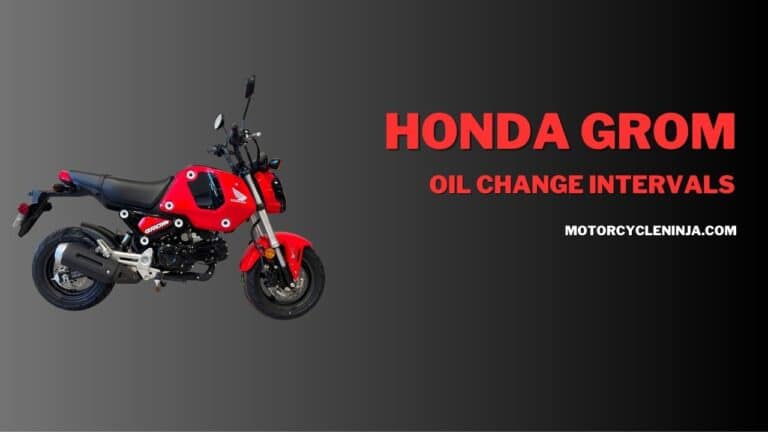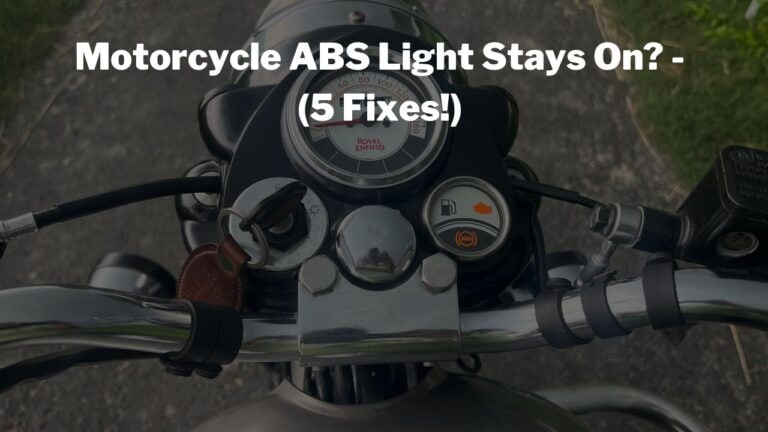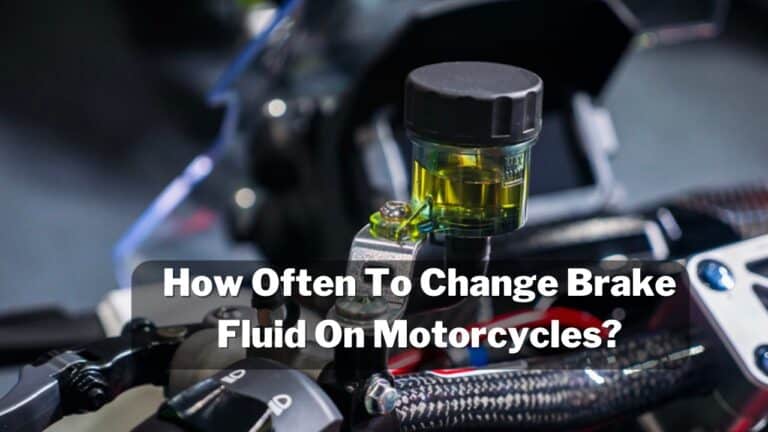Why Is It Hard To Shift Gears On My Motorcycle? -(5 Easy Fixes!)
Are you facing difficulties in gear shifting on your motorcycle? Don’t worry, you’re not alone. I also encountered hard gear shifting last week on my motorcycle.
I started the engine and pulled the clutch lever, but it was very hard when I was trying to put it in the first gear.
So, why is it hard to shift gears on my motorcycle? A loose clutch wire, worn clutch plates, low engine oil level, cold weather, poor lubrication, bent shift lever, and faulty gearbox are the most common reasons for hard gear shifting. If you’re facing a problem in gear shifting, tighten the clutch wire, check the engine oil level with a dipstick, and top up if it’s low.
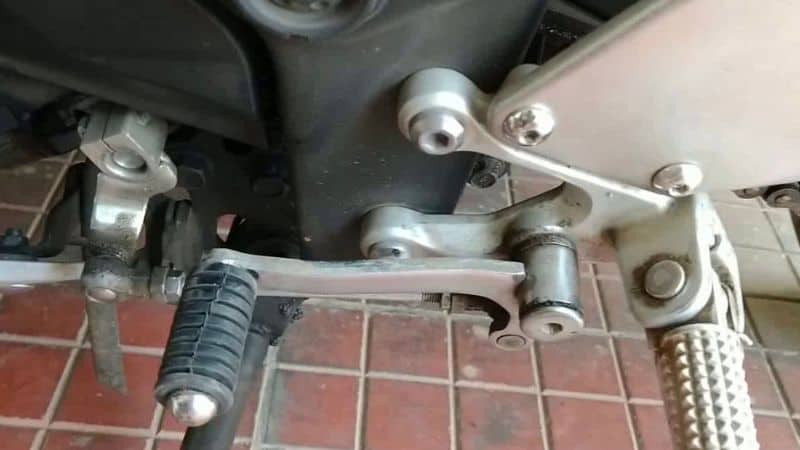
Table of Contents
- 1 How Does Gear Shifting Mechanism Work On Motorcycle?
- 2 How Do I Make My Motorcycle Gear Shift Easier?
- 3 How Do I Know If My Gearbox Is Damaged?
- 4 How Much Does It Cost To Fix A Motorcycle Gearbox?
- 5 Why Is It Hard To Put My Motorcycle Out Of First Gear?
- 6 What Are The Symptoms Of Bad Motorcycle Transmission?
- 7 Can Low Oil Cause Stiff Gear On Motorcycle?
- 8 Conclusion
How Does Gear Shifting Mechanism Work On Motorcycle?
Any automobile is designed in two parts: the engine and the transmission system.
Engine constantly generates power from the combustion of the air-fuel mixture. But your vehicle moves forward when you put it in gear. This is where the transmission system acts.
A motorcycle engine runs over 5000 RPM; you can not shift gears at such high speed. For smoother gear shifting, your transmission system should be disengaged from the engine and achieve synchronous speed.
The clutch system in your motorcycle engages and disengages the transmission system to achieve synchronous speed.
When we pull the clutch lever, the plate disengages with the crankshaft, breaking the connection between the engine and the transmission system.
Then, we put the motorcycle in the desired gear and released the clutch lever. Once we release the lever, the clutch plates engage with the crankshaft, and the engine power is transmitted to the wheels.
I hope you’ve understood how automobile gear-shifting mechanisms and transmission systems work. Now, let’s see how to make motorcycle gear shifting smoother and easier.
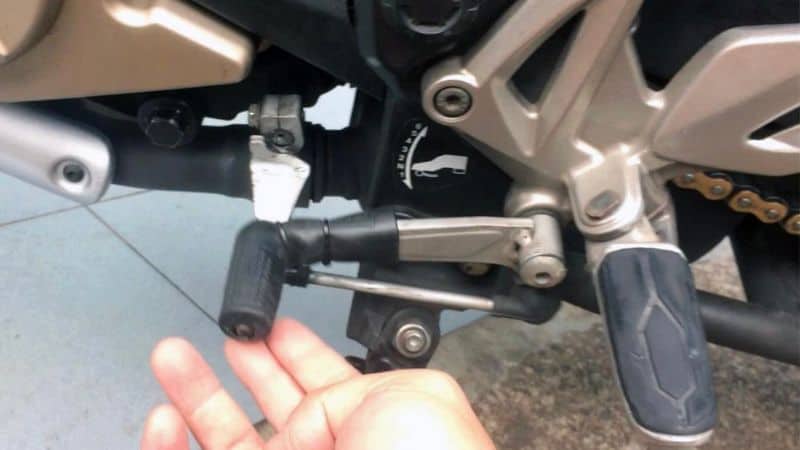
How Do I Make My Motorcycle Gear Shift Easier?
It could be frustrating if you’re facing problems in gear shifting on your motorcycle. I also faced this situation a few weeks back. But, after reading many guides, I finally found the reason and fixed it.
Here’s how to make motorcycle gear shifting smoother–
1. Adjust The Clutch Wire Tension
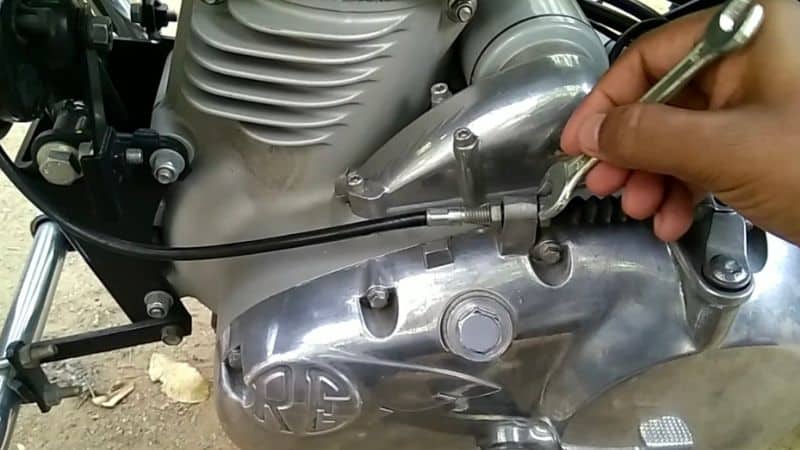
A clutch wire is made of metal with a plastic covering. Over time, the metal wire expands due to permanent deformation and continuous tension. As a result, it doesn’t apply force on the pressure plate, which causes problems in disengagement.
Although you pull the lever, your clutch doesn’t disengage with the crankshaft, resulting in hard gear shifting.
If your clutch wire is too loose, adjust the tension by rotating the cable adjustment screw.
2. Give Sufficient Clutch Free Play
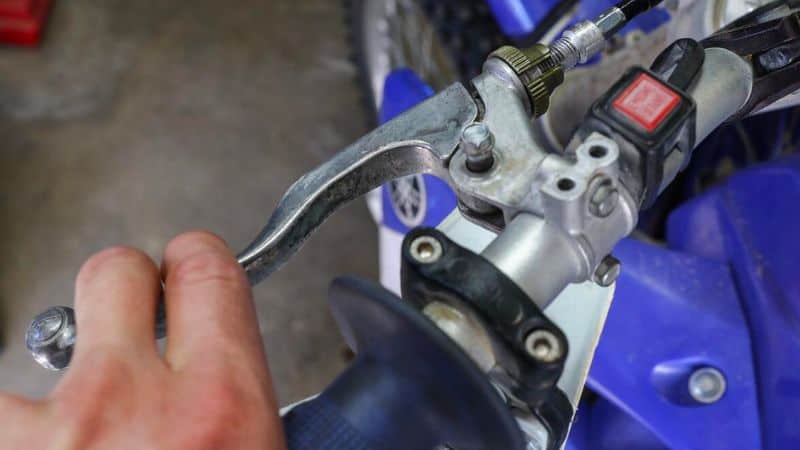
Your clutch lever should have sufficient free play (free movement) for proper engagement with the crankshaft.
Providing 10 to 15 mm free play at the clutch lever is recommended for a better riding experience.
If the free clutch play exceeds 15 mm, the clutch plate will not disengage properly, and you’ll face hard gear shifting problems.
Also, if the free play is less than 10 mm, the clutch plates will not engage properly and tatter the frictional material.
You can adjust the clutch free play by adjusting the screw. If there is no scope, then replace the clutch cable.
3. Change Engine Oil
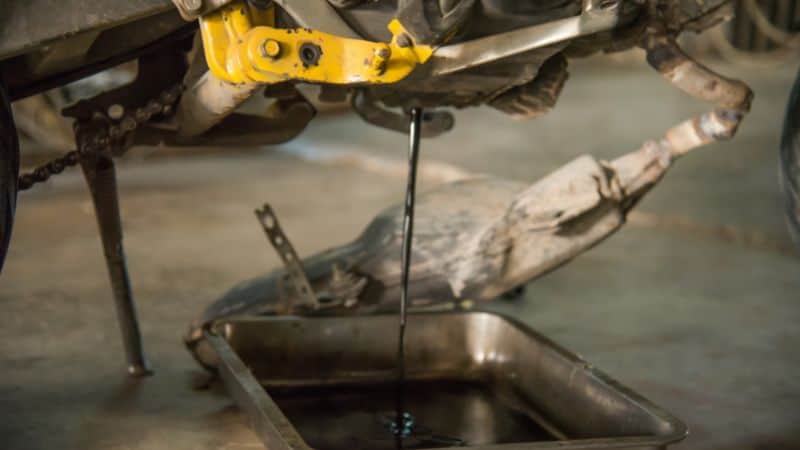
A motorcycle uses a wet clutch system that shares engine oil for lubrication. Synthetic motor oil loses its viscous property with usage and time. Manufacturers recommend changing the motorcycle’s engine oil every 5,000 miles or every six months.
If your engine oil is too old, it will not lubricate the transmission system properly, and you’ll face difficulty shifting gears. Change the motorcycle engine oil if it’s over six months, and your gear shifting will be smoother.
4. Top-Up Engine Oil
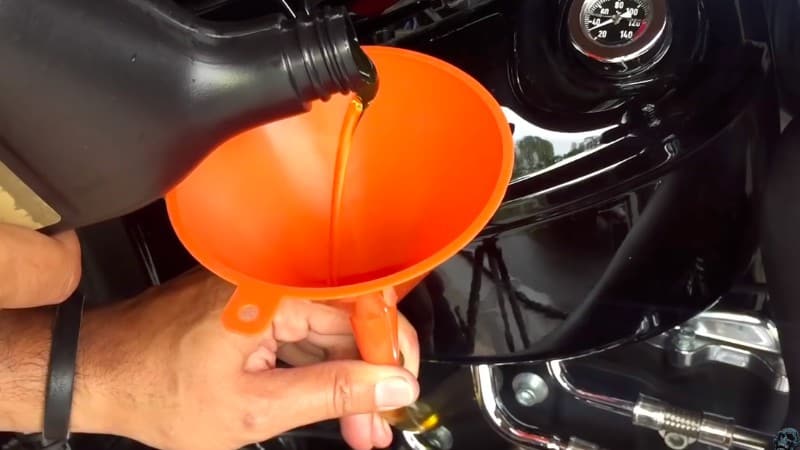
Due to high engine temperatures, motor oil evaporates via the exhaust pipe. Over time, the oil drops below the minimum level, which causes improper lubrication of the gearbox and clutch plates.
Being a mechanical engine and motorcycle enthusiast, I recommend checking the engine oil level after every 15 days. Open the dipstick and measure the level; top it up if it’s below the required level.
I would recommend you use the same engine oil brand for better performance. I generally avoid mixing two different brands of engine oils in motorcycles.
5. Change Clutch Plates
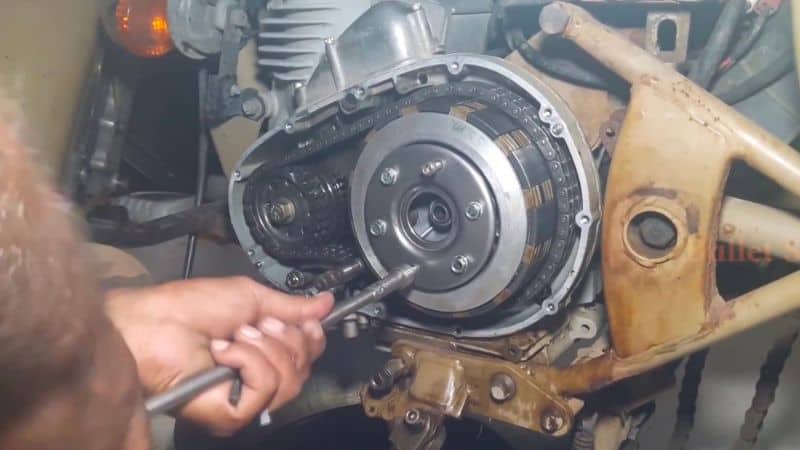
A motorcycle uses a multi-plate wet clutch system that cools down with engine oil. If you use low-quality oil or drop below the minimum recommended level, your clutch plates burn and stick with pressure plates.
In that case, your motorcycle gear shifting will be too hard when the engine is turned on. To fix the problem, you need to change the clutch plates.
If you have never done this, visit the nearest mechanic shop to replace the clutch and pressure plates. Your gear shifting will be very smooth after the clutch plate replacement.
If the issue persists, it indicates your gearbox is damaged, and you must repair it.
Also Read: Can A Motorcycle Use Car Engine Oil?
How Do I Know If My Gearbox Is Damaged?
If your motorcycle is shaking, jerking, grinding, and having a burning smell, it means your gearbox is damaged. It mostly happens because of inappropriate heat transmission and poor gearbox lubrication.
A gearbox and transmission system is a complex part of your bike, and I always advise getting them fixed by a professional mechanic. Any minor fault will lead to serious accidents.
How Much Does It Cost To Fix A Motorcycle Gearbox?
As I mentioned earlier, motorcycle gearbox repair is a complex job that requires skills and experience.
Generally, the motorcycle gearbox repair will cost anywhere between $300 to $1200, depending on the problem’s severity and the motorcycle’s make and model.
If you’re going for a gearbox rebuild, the parts replacement will only cost you $400 to $500. The labor charges will be approximately $500 to $700.
Why Is It Hard To Put My Motorcycle Out Of First Gear?
The most common reason motorcycles get stuck in first gear is a lack of engine oil. In other vehicles, such as cars and trucks, a dry clutch system is used, while motorcycles use a wet clutch system, which requires lubrication for better functioning.
The motorcycle shares the same oil for engine cooling and transmission system, and if the oil level drops, the clutch doesn’t disengage properly, and it feels hard to put a motorcycle out of first gear. To fix this, you can add more engine oil to your motorcycle.
What Are The Symptoms Of Bad Motorcycle Transmission?
The common symptoms of a bad motorcycle transmission system are delayed acceleration, difficulty in shifting the clutch, or a clunking sound when shifting gears.
It’s better to take your motorcycle to a professional mechanic shop to fix the bad power transmission issue.
Can Low Oil Cause Stiff Gear On Motorcycle?
Yes, low oil will cause improper lubrication to clutch plates and gearboxes, which results in hard gear shifting.
In fact, low engine oil is the major cause of stiff gear on a motorcycle or car. You can refer to the user manual and maintain the approximate oil level for smoother performance.
Conclusion
A motorcycle faces hard gear shifting due to loose clutch lever wire, low engine oil, burnt clutch, or faulty gearbox. You can adjust the clutch tension adjustment screw to ensure proper engagement and disengagement while shifting gears. If nothing helps, visit the nearest mechanic shop to fix the issue.

